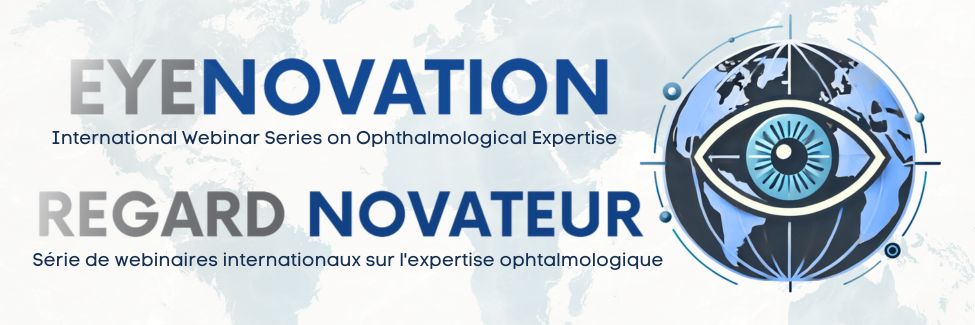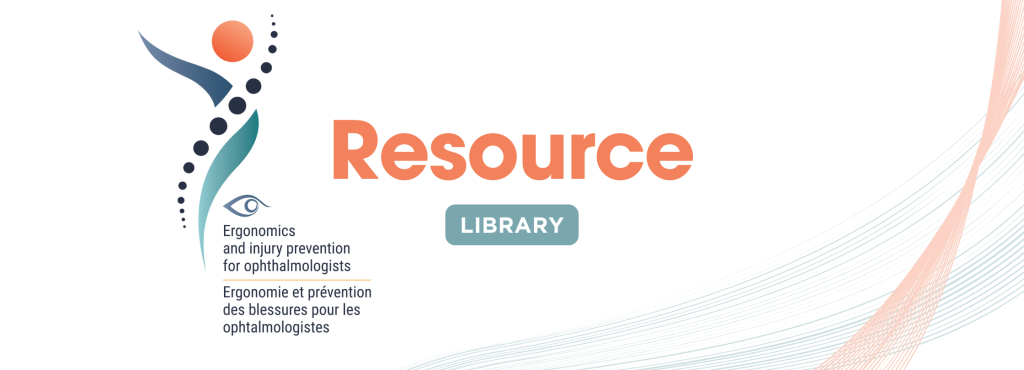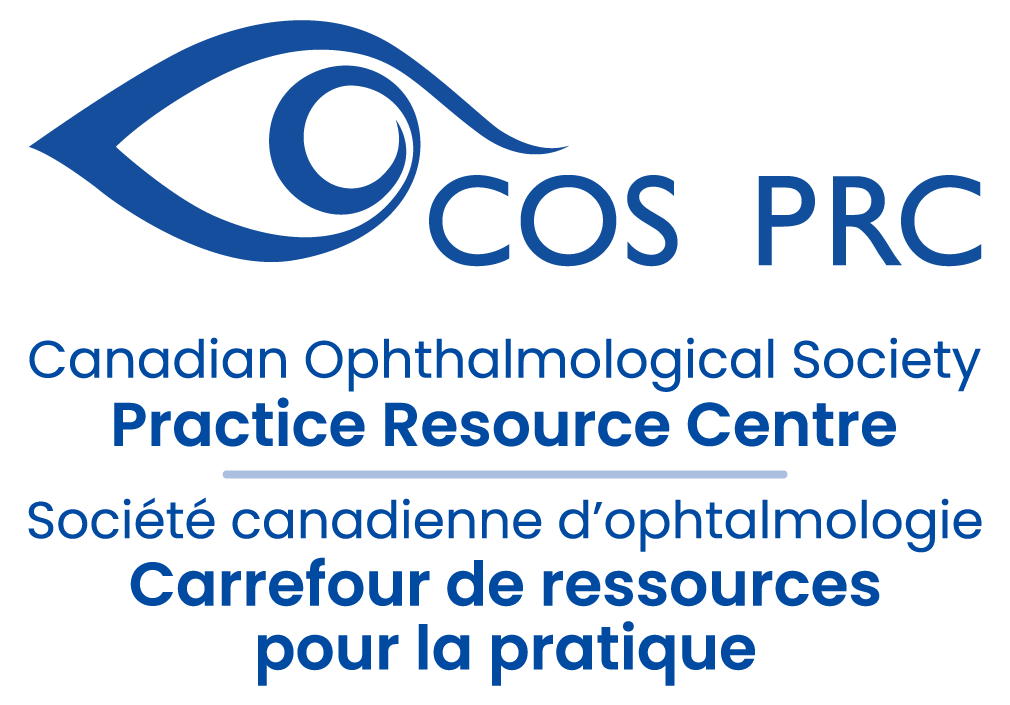EyeNovation: Presbyopia-Correcting IOLs: What You Need to Know

Join us for our next EyeNovation webinar, “Navigating the Ocean of Presbyopia-Correcting IOLs”, presented by Dr. Francesco Carones, a leading expert in refractive and cataract surgery.
This webinar will take place on December 17, 2025 from 12:00 PM – 1:00 PM Eastern Time.

Francesco Carones, MD, is an internationally recognized leader in refractive and cataract surgery. A graduate of the University of Milan, he completed specialized refractive surgery training at Emory University before serving as Assistant Professor and Director of Refractive Surgery at San Raffaele Hospital in Milan.
Now Medical Director and Physician CEO of Advalia Vision, Dr. Carones focuses on lens replacement and refractive procedures. Since 1989, he has been deeply involved in pioneering technologies—excimer lasers, LASEK, mitomycin-C applications, toric and multifocal IOLs, and advanced lenticular extraction platforms. He also developed the first objective software for defocus curve measurement.
Dr. Carones has published more than 160 peer-reviewed works and lectures globally at major scientific meetings. He is Associate Editor of the Journal of Refractive Surgery, serves on multiple editorial boards, and sits on advisory boards for leading ophthalmic companies. He is a Board Member of AECOS and WCRSVS and President-Elect of AECOS Europe. In 2023–2024, he was named to the Ophthalmologist PowerList of the top 100 most influential leaders in the field.
Learning Objectives
By the end of the session, participants will be able to:
- Understand the performances of the different presbyopia-correcting IOLs both as regards their advantages (e.g., defocus curves, spectacle independence provided) and their drawbacks (e.g., night dysphotopsia, light dependence for reading).
- Present the different technologies to patients effectively to help them understand which options best suit their needs and expectations
- Manage postoperative outcomes by aligning patient expectations with clinical reality and addressing dissatisfaction.
DOVS GRAND ROUNDS – Timely, topical, and technologic pearls for effective teaching – VIA ZOOM
Date: Friday November 21, 2025
Time: 7:30 AM – 8:30 AM
Title: Timely, topical, and technologic pearls for effective teaching
Speaker: Dr. Andrew Lee
Zoom link: https://us02web.zoom.us/webinar/register/WN_ofczSy-vT8K5ozDvq33xkA
After registering, you will receive a confirmation email containing information about joining the webinar.
Objectives:
- To describe the countermeasures for overcoming the barrier of limited time for busy clinicians
- To describe topical and technologic options for improving teaching outside and inside the clinic
The VPP Grand Rounds Local and Visiting Professor Program is a self-approved group learning activity (Section 1) as defined by the Maintenance of Certification program of The Royal College of Physicians and Surgeons of Canada. You will be able to claim 1 credit for this round.
DOVS CORNEA ROUNDS – Part one: Not in the textbook. Part two: Fellowship, early career, and general life hacks
Date: Thursday, November 20
Time: 5:00 PM – 6:00 PM Eastern Time
Title: Part one: Not in the textbook. Part two: Fellowship, early career, and general life hacks
Speaker: Dr. Joshua Teichman
Zoom Link to Register: https://us02web.zoom.us/webinar/register/WN_sEojKE9ASr6exkBaqh58Hw
After this session, participants will be able to:
- Explore conditions not found in textbooks;
- Discuss mindset for unknown cases;
- Discuss productivity and efficiency pearls.
The VPP Grand Rounds Local and Visiting Professor Program is a self-approved group learning activity (Section 1) as defined by the Maintenance of Certification program of The Royal College of Physicians and Surgeons of Canada. You will be able to claim 1 credit for this round.
EyeLearnIVFA
EyeLearnIVFA is a Canadian collaborative virtual resource for intravenous fluorescein angiography (IVFA). It is designed to provide students, fellows and ophthalmologists an accessible and self-paced medical education resource.
The website reviews fundamental anatomy and concepts related to fluorescein angiography. As well, through a case based approach, EyeLearnIVFA hopes to increase familiarity with interpretation of this imaging modality and emphasize the clinical utility of this image modality in management of retinal vascular disease. While cases exist on the website already, we hope to build an atlas of class and rare cases to ensure it becomes a well-rounded and robust resource. As such, we invite case contributions from Canadian medical learners, residents, fellows and ophthalmologist colleagues.
| Founders | Dr. Alexander Kaplan, BSc, MD, FRCS(C) Uveitis and Medical Retina Specialist, University of Toronto Dr. Wai-Ching Lam, MD, FRCS(C) Vitreo-Retinal Surgeon, University of British Columbia Dr. Imaan Zera Kherani, BHSc, MD PGY-3 Ophthalmology Resident, University of Alberta |
| Core Team | Caroline Aizouki Fourth Year Medical Student, University of Alberta Paige Campbell, MD PGY-1 Resident Physician, University of Alberta |
Ergonomics: Ophthalmology Educational Series
Title: COS Ergonomics for the Ophthalmologist Videos
Description: Explore presentations, handouts, and video recordings from the 2017 COS Annual Meeting focused on preventing musculoskeletal injury in ophthalmology. Topics include body mechanics, the prevalence of MSK disorders, and the development of ergonomic education modules. This resource features insights from clinicians and experts including Drs. Brissette, Diaconita, Ratzlaff, and Kherani, and certified athletic therapist George Matos.
Link: https://www.cosprc.ca/ergonomics-for-the-ophthalmologist/
Queen’s University – Musculoskeletal Disorders in Ophthalmologists
Description: A 30-minute online module on musculoskeletal disorders in ophthalmologists, offered by Queen’s University Department of Ophthalmology. Completion is eligible for 0.5 hours of Royal College Section 2: Self-Learning credits. Topics include ergonomic risk factors, injury prevention strategies, and posture optimization for clinical and surgical settings.
Link: https://ophthalmology.queensu.ca/academics/cme/ergonomics
COS Ergonomics and Injury Prevention Working Group
The Canadian Ophthalmological Society (COS) Ergonomics and Injury Prevention Working Group is committed to promoting physical wellness across all stages of ophthalmology practice. Through educational initiatives, resource development, and collaborative research, we aim to make a focus on ergonomics a standard in Canadian ophthalmic care.
Our Mission: To eliminate work-related injuries for Canadian ophthalmologists.
Our Vision: To educate every Canadian ophthalmologist on ergonomics and how best to mitigate risks.
Our Values: Respect, passion, teamwork, creativity, inclusion, and diversity.
Our Current Projects:
- Canadian Handbook for Ergonomics and Injury Prevention for Ophthalmologists
- Ergonomics Toolbox for Residents
- Resident Ergonomics Curriculum Development
- Social Media Educational Initiatives and Challenges
- Sightlines Ergonomics Educational Initiatives
- SAP: Ergonomics: Doesn’t Hurt To Think About It, But It May Hurt Not To! (Royal College MOC Section 3 Accredited)
- Webinar: We’ve Got Your Back! A COS Working Group in Ergonomics and Injury Prevention Webinar (October 2025)
- Ergonomics Podcast (Fall 2025)
- And many more…!
Ergonomics and Injury Prevention Working Group Members

Journal Articles & Editorials:
Explore the growing body of peer-reviewed research on ergonomics in ophthalmology and microsurgery.
LEARN MORE →
Magazine Articles:
Hear directly from ophthalmologists about real-world experiences, preventive tips, and system-wide challenges related to MSK injury.
LEARN MORE →
Podcasts & Videos:
Prefer to learn on the go? Explore expert-led podcasts and video content on ergonomics in ophthalmology and surgery.
LEARN MORE →
Ophthalmology Educational Series:
Engage with HIGH-YIELD accredited modules and curated training developed by national experts.
LEARN MORE →
Other Ergonomics Resources for Physicians:
Ergonomic challenges affect all healthcare providers. Learn from a broader body of literature in medicine and surgery.
LEARN MORE →
Musculoskeletal Disorders in Ophthalmologists
The COS Ergonomics working group is pleased to share an online resource focused on musculoskeletal disorders in ophthalmologists. Developed by Queen’s University in collaboration with Weill Cornell Medicine, this online module highlights best ergonomic practices and injury prevention.
Why is this important? The physical demands of ophthalmology puts physicians at risk for work-related musculoskeletal disorders (MSDs) due to poor ergonomics.
After this module, participants will:
- Review the importance of ergonomics for ophthalmologists;
- Identify areas in the clinic and operating room that may predispose to musculoskeletal disorders;
- Learn proper ergonomic risk factor modification;
- Recognize signs and symptoms of musculoskeletal disorders, understanding the importance of early intervention.
Completion of this online module has been determined by Queen’s University to be eligible for 0.5 hours of Royal College Physicians and Surgeons of Canada Section 2: Self Learning credits.
Ready to learn more? Click below!
Ocular Mucous Membrane Pemphigoid Course
Location: Virtual – access the course HERE
Mucous membrane pemphigoid (MMP) is a cicatricial autoimmune disease primarily affecting mucous membranes of the conjunctiva, oral cavity, nasopharynx, oesophagus and genitals. Ocular involvement occurs in approximately 80% of cases, highlighting the importance of early diagnosis to prevent irreversible damage and potential blindness.
Authors: Melissa Lu (MD), Fady Sedarous (MD, FRCSC), Mona Harissi-Dagher (MD, FRCSC)
Learning objectives: Upon completion of this module, learners will gain a comprehensive understanding of the pathophysiology, clinical signs, diagnostic and treatment principles of ocular mucous membrane pemphigoid (OMMP), enabling them to apply this knowledge in clinical practice.
Target audience: Ophthalmology residents and ophthalmologists.
Workplace Eye Awareness Month: Protecting Vision in Professional Environments
Submitted by: Yosra Er-reguyeg

March is Workplace Eye Awareness Month, dedicated to promoting eye health and safety in professional settings. With over 700 work-related eye injuries occurring daily in Canada, protecting vision is a critical aspect of workplace safety. This PRC issue provides an overview of common workplace hazards and protective strategies; as well as a list of national resources to help providers promote workplace eye safety and awareness among patients.
Common Workplace Eye Hazards
- Flying Particles and Debris: metal shavings, wood splinters, dust, and other airborne materials can cause corneal abrasions or penetrate the eye, leading to severe damage.
- Chemical Exposure: industrial and healthcare professionals risk chemical burns from splashes and airborne vapours.
- Radiation Exposure: welders, laboratory workers, and those using high-intensity light sources face ultraviolet (UV) or infrared radiation risks, which can damage ocular tissues.
- Digital Eye Strain: office workers experience Computer Vision Syndrome due to prolonged screen use, leading to dryness, discomfort, and headaches.
- Infectious Disease Exposure: healthcare workers are at risk of eye infections from bloodborne pathogens or airborne contaminants.
Eye Protection Guidelines in Canadian Workplaces
- Usage of Canadian Standards Association (CSA)-certified protective eyewear: all protective eyewear in Canada must meet CSA Z94.3 standards to ensure impact resistance, UV protection, and durability.
- Prevention of digital eye strain in office settings: follow the 20-20-20 rule: every 20 minutes, take a 20-second break and look at something 20 feet away. Optimize your workstation by adjusting screen brightness, ensuring proper lighting, and positioning the monitor at eye level.
- Anticipation of workplace eye injuries: emergency eyewash stations should be easily accessible in workplaces handling chemicals and patients should seek medical evaluation as soon as possible.
Vision Care and Occupational Health Policies in Canada
- Many Canadian employers provide vision care benefits, but only15% of employees report satisfaction with their coverage.
- Occupational Vision Programs across Canada provide prescription safety eyewear to employees in industries requiring eye protection.
- Regular comprehensive eye exams can detect early signs of workplace-related vision issues and are encouraged by the Canadian Ophthalmological Society.
Workplace eye safety is essential for preventing injuries and long-term vision issues. Recognizing Workplace Eye Awareness Month is an opportunity to reinforce best practices and ensure clear vision for a productive workforce.
Resources on workplace eye safety
- CCOHS H&S Report (2014) – Use of CSA-approved eyewear and matching PPE to hazards ( CCOHS: Health and Safety Report – Past Issues ) ( CCOHS: Health and Safety Report – Past Issues ).
- Canada.ca – Protect Your Eyes! – qualities of good protective eyewear and care tips (Protect Your Eyes! – Canada.ca) (Protect Your Eyes! – Canada.ca).
- Canadian Association of Optometrists – reports ~75% of Canadians have digital eye strain symptoms (How Long Does Eye Strain Last? | Cochrane, AB).
- CCOHS – Office Ergonomics: Eye Discomfort – causes of screen-related eyestrain ( CCOHS: Office Ergonomics – Eye Discomfort in the Office ).
- CCOHS H&S Report (2019) – tips to prevent digital eye strain (20-20-20 rule, breaks, ergonomics) ( CCOHS: Health and Safety Report – Past Issues ) ( CCOHS: Health and Safety Report – Past Issues ).
- Benefits Canada (2022) – survey of remote workers’ increased eye issues (As employees’ screen exposure increases, is it time to update vision benefits? | Benefits Canada.com).
- CNIB – “In the Blink of an Eye…Avoiding Eye Injuries” – first aid tips for specks, blows, cuts, chemical splashes (In the blink of an eye … Avoiding eye injuries at work, home and play) (In the blink of an eye … Avoiding eye injuries at work, home and play).
- CCOHS – First Aid for Chemical Exposures – flush eyes ≥15 minutes for chemicals ( CCOHS: First Aid for Chemical Exposures ). CCOHS H&S Report – importance of eyewash stations ( CCOHS: Health and Safety Report – Past Issues ).
- Canadian Association of Optometrists – Best Practices Guide to Vision Benefits (2022) – stats on vision benefit satisfaction and missed work due to vision issues (Best Practices Guide to Vision Care Benefits) (Best Practices Guide to Vision Care Benefits).
- Canadian Ophthalmological Society – press release 2021 – urging regular eye exams (Canadian Ophthalmological Society shares eye-opening stats and tips for healthy vision during Vision Health Month – COS-SCO).
- Eyesafe BC (Doctors of Optometry) – overcoming barriers to PPE compliance with prescription safety eyewear (Eye Injury Statistics: Why Workers Won’t Use Safety Glasses – Eyesafe BC by British Columbia Doctors of Optometry) (Eye Injury Statistics: Why Workers Won’t Use Safety Glasses – Eyesafe BC by British Columbia Doctors of Optometry).








